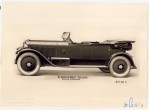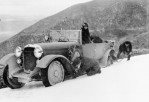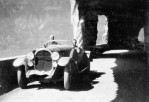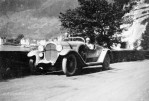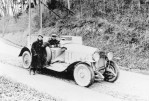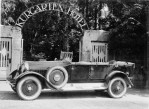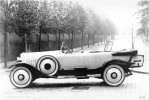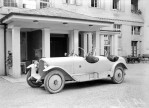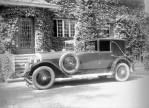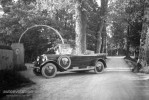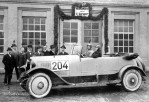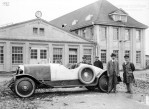Segment: Roadster & Convertible
Production years: 1921, 1922, 1923, 1924, 1925, 1926, 1927, 1928
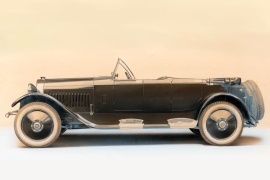 21 Photos
21 PhotosIn 1921 Maybach introduced its first production vehicle, the W3, at the Berlin Motor Show and offered it with a choice of bodyworks or as a rolling chassis.
Karl Maybach tried his engineering skills when he made the W1 prototype, but mostly for the drivetrain since he used a chassis from a Daimler vehicle. After that, he created a new base for its next vehicle, the W3. Strangely, there was no W2 model, and the W letter came from the word "Wagen," which means "car" in German.
The new vehicle enjoyed limited success, and none of them survived. Still, older pictures and advertising materials from those times did. Besides the closed bodywork version, Maybach also built several convertible versions for the W3. Like its sedan sibling, the open-top model featured a long engine compartment fitted with side vents to help cool the inline-six powerplant. The car featured side steps on the sides to help occupants with ingress and egress. The straight-up windshield was fitted with wipers, so the car could be driven during the rain. The torpedo bodywork was fitted with four doors, and depending on the version, the rag-top could've been retracted behind the cabin. Also, on the sides, the automaker installed mounting points for the spare wheels.
The interior was created with exclusive, expensive materials. Karl Maybach understood that such an expensive vehicle should have been fitted with luxurious amenities. He also installed two seats at the front and a wide, comfortable bench in the rear. So even though it wasn't the most beautiful car on the market, it was still one of the most elegant.
Under the hood, the automaker installed an inline-six powerplant that developed 70 PS from its 5.7-liter displacement. Maybach paired it with a two-speed manual gearbox that sent the power to the rear wheels.
MAYBACH Typ W3 22/70 HP (Open Body) 1921, 1922, 1923, 1924, 1925, 1926, 1927, 1928
- 5.7
MAYBACH Typ W3 22/70 HP (Open Body)
5.7
ENGINE SPECS - 5.7 | |
|---|---|
| Cylinders: | L6 |
| Displacement: | 5738.5 cm3 |
| Power: | 51 KW @ 2200 RPM 70 HP @ 2200 RPM 68 BHP @ 2200 RPM |
| Fuel System: | Carburetor |
| Fuel: | Gasoline |
PERFORMANCE SPECS | |
|---|---|
| Top Speed: | 68 mph (109 km/h) |
TRANSMISSION SPECS | |
|---|---|
| Drive Type: | Rear Wheel Drive |
| Gearbox: | Sequential, 3 Speed |
BRAKES SPECS | |
|---|---|
| Front: | Drums |
| Rear: | Drums |
TIRES SPECS | |
|---|---|
| Tire Size: | 895 X 150 |
DIMENSIONS | |
|---|---|
| Height: | 76.8 in (1951 mm) |
| Front/rear Track: | 58.3/58.3 in (1,481/1,481 mm) |
| Wheelbase: | 144.1 in (3660 mm) |
WEIGHT SPECS | |
|---|---|
| Unladen Weight: | 4850 lbs (2200 kg) |


